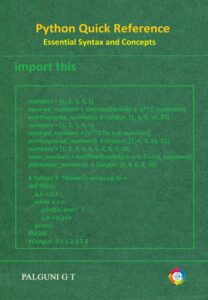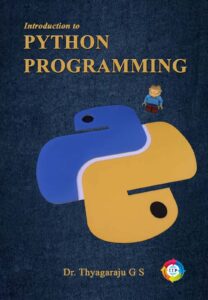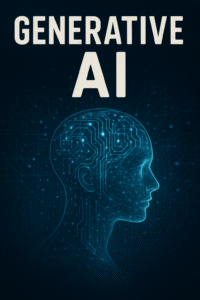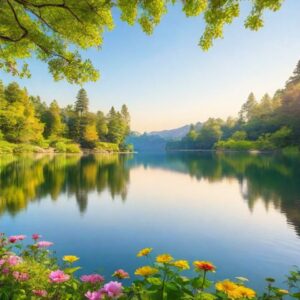Introduction
Ghibli images refer to the distinctive visual style associated with Studio Ghibli, the renowned Japanese animation studio founded by Hayao Miyazaki and Isao Takahata in 1985. Known for their breathtaking landscapes, richly detailed backgrounds, and expressive character designs, Ghibli images evoke a sense of nostalgia, warmth, and wonder. The unique aesthetics are characterized by soft color palettes, intricate lighting, and a balance between realism and fantasy, making them instantly recognizable and deeply immersive.
Reference: Studio Ghibli Official Website
The Creation Process of Ghibli-Style Images
The creation of Ghibli-style images has evolved over the years, transitioning from traditional hand-drawn techniques to modern digital methods and, more recently, AI-driven processes.
Traditional Techniques (1985 – Early 2000s)
- Hand-Drawn Animation – Ghibli artists sketched every frame meticulously, maintaining fluidity and consistency.
- Watercolor and Acrylic Backgrounds – These were painted manually to create depth and richness in the scenes.
- Layering and Depth Techniques – Multiple layers of artwork were used to create a three-dimensional effect without CGI reliance.
Digital Techniques (2000s – Present)
- Digital Painting – Tools like Photoshop and Corel Painter are used to enhance traditional hand-drawn elements.
- Blending and Texturing – Digital brushes mimic watercolor textures to retain the organic feel.
- 3D Enhancements – Subtle 3D modeling helps improve perspective accuracy without overshadowing the 2D aesthetic.
AI-Based Generation of Ghibli Images (2020s – Present)
With advancements in AI, creating Ghibli-style images has become more accessible using deep learning models such as GPT-based image generators and diffusion models.
Stepwise Procedure for Creating Ghibli Images Using AI Tools:
- Select an AI Tool – Use AI-powered tools like MidJourney (MidJourney Official Site), DALL·E (OpenAI DALL·E), or Stable Diffusion (Stable Diffusion) trained on Ghibli-style datasets.
- Input a Prompt – Describe the scene, characters, and atmosphere in a detailed text prompt (e.g., “A Ghibli-style enchanted forest with glowing lanterns and a small wooden house”).
- Generate Initial Artwork – The AI tool will process the text and generate an image based on learned patterns from Ghibli aesthetics.
- Refine the Image – Use editing tools like Photoshop or Procreate to enhance details, add textures, or adjust lighting.
- Post-Processing & Finalization – Apply color grading, fine-tune shadows, and make final artistic tweaks to align with the Ghibli aesthetic.

Step-by-Step Guide to Creating a Ghibli-Style Image Using ChatGPT and Grok
Creating a Ghibli-style image can be done in two ways:
- Generating an AI-rendered image from scratch using ChatGPT and Grok AI.
- Transforming an existing photo into a Ghibli-style artwork using ChatGPT and Grok AI.
Below is a detailed breakdown of both methods:
Method 1: Generate a Ghibli-Style Image from Scratch
Step 1: Use ChatGPT to Generate a Detailed Prompt
- Open ChatGPT
- Launch ChatGPT on your browser or app.
- Describe the Image You Want
- Provide as much detail as possible to ensure an accurate and visually stunning result.
- Include elements like:
- Characters (e.g., a young girl in a flowing dress, an elderly wizard, a small creature companion).
- Setting (e.g., a peaceful countryside with rolling hills, a mystical forest, a small seaside town).
- Lighting & Mood (e.g., soft golden sunlight, dreamy twilight, warm and magical ambiance).
- Art Style (e.g., soft watercolors, hand-drawn textures, Ghibli-inspired fantasy landscapes).
- Additional Features (e.g., floating spirits, glowing lanterns, whimsical flying creatures).
- Ask ChatGPT to Generate a Structured Prompt
- Request a structured and detailed prompt that Grok AI can interpret effectively.
- Example:
- “Generate a detailed prompt for Grok to create a Ghibli-style illustration of a small village at the foot of a magical mountain, with a young boy in a blue cloak looking up at a sky filled with floating lanterns, accompanied by a tiny dragon.”
- Refine the Prompt
- Review the prompt and make adjustments for better clarity or specificity.
Step 2: Generate the Image in Grok AI
- Open Grok AI
- Launch the Grok AI platform or application.
- Input the ChatGPT-Generated Prompt
- Copy and paste the detailed text prompt into Grok’s prompt field.
- Execute the Image Generation
- Click the ‘Generate’ or ‘Create’ button to process the image.
- Review & Download
- Evaluate the image for accuracy and aesthetics.
- If necessary, tweak the prompt and regenerate.
- Download and save the high-resolution image for personal use or sharing.
Method 2: Transform an Existing Image into a Ghibli-Style Artwork
Step 1: Prepare Your Photo
- Select a High-Quality Image
- Choose a personal photo or any image you wish to transform into a Ghibli-style illustration.
- Ensure the image has clear subject focus, good lighting, and high resolution for best results.
- Upload the Image to ChatGPT (if supported)
- If using a ChatGPT tool that allows image processing, upload the image and describe how you want it transformed.
- Example description:
- “Convert this photo into a hand-drawn Studio Ghibli-style artwork with soft watercolor tones, warm lighting, and whimsical fantasy elements.”
Step 2: Generate a Transformation Prompt for Grok
- Ask ChatGPT to Create a Style Transformation Prompt
- Example request:
- “Generate a prompt for Grok to convert a real-life photo into a Ghibli-style digital painting, maintaining the original composition but enhancing colors, textures, and lighting to match the signature soft, dreamy aesthetic of Studio Ghibli.”
- Example request:
- Refine the Prompt
- Review and adjust details to ensure clarity and alignment with your vision.
Step 3: Apply the Transformation in Grok AI
- Open Grok AI
- Launch Grok’s image processing tool.
- Upload the Image
- Select the image file you wish to transform and upload it to Grok.
- Input the Transformation Prompt
- Copy and paste the refined prompt into Grok’s input field.
- Generate the Ghibli-Style Image
- Click ‘Transform’ or ‘Generate’ to begin the artistic rendering process.
Step 4: Review & Finalize the Image
- Check the Quality
- Ensure the image retains the original details while reflecting Ghibli’s unique artistic style.
- Make Adjustments (If Needed)
- If the result isn’t perfect, tweak the prompt slightly and regenerate the image.
- Download & Save
- Once satisfied, download the transformed Ghibli-style image for use.
By following these steps, you can either create a completely new Ghibli-style illustration from scratch or transform an existing photo into a whimsical, hand-drawn masterpiece.
Here are 10 of the most popular prompts used to create breathtaking Ghibli-style AI images:
1. Mystical Forest Adventure
“A young girl in a flowing blue dress wanders through an enchanted forest filled with glowing mushrooms, tiny floating spirits, and ancient, towering trees. Soft golden sunlight filters through the leaves, creating a dreamy, magical atmosphere in the classic Studio Ghibli art style.”

2. Seaside Town at Sunset
“A peaceful Ghibli-style seaside town with cobblestone streets, red-roofed houses, and small wooden boats floating near the shore. A curious black cat sits on a windowsill watching the glowing sunset, while a gentle sea breeze carries the scent of adventure.”

3. Flying Over a Fantasy Kingdom
“A young boy with windswept hair and a red scarf soars through the sky on a giant white bird, gazing down at a breathtaking kingdom below. Floating islands, waterfalls in the sky, and ancient castles covered in ivy create a whimsical and fantastical atmosphere, rendered in soft pastel hues.”

4. Hidden Village in the Mountains
“A cozy village hidden deep in the misty mountains, where tiny stone cottages with moss-covered roofs sit alongside winding streams and wooden bridges. Cherry blossoms drift in the wind as an old wise woman feeds a group of mystical forest creatures in front of her home.”

5. Train Ride to the Spirit World
“A magical train glides over a sea of clouds, illuminated by glowing lanterns. A young boy and his fox companion sit inside, looking out at the vast, endless sky filled with twinkling stars and shadowy spirit figures that fade into the mist. The scene is painted in soft blues and purples, evoking a peaceful and mysterious Ghibli feel.”

6. Floating Market at Dawn
“A lively floating market in a mystical town where vendors sell glowing fruits, enchanted potions, and handcrafted trinkets. A young girl with a red ribbon in her hair walks along the wooden docks, mesmerized by the sights, as fireflies dance above the water, casting golden reflections.”

7. A Cozy Witch’s Cottage
“A tiny, warm witch’s cottage nestled in a field of sunflowers, with a smoking chimney and vines creeping up its wooden walls. A black cat lounges on the windowsill, while a young apprentice stirs a bubbling cauldron inside. Jars of herbs, potions, and magical books fill the room, all lit by a flickering candle.”

8. The Secret Garden of Spirits
“A hidden garden where friendly spirits roam among giant glowing flowers and ancient stone pathways. A small child wearing a straw hat explores the area, accompanied by a round, fluffy creature with big eyes. A waterfall glows under the moonlight, filling the air with a soft, magical mist.”

9. A Tea House in the Clouds
“A floating tea house rests on top of a drifting cloud, surrounded by cherry blossom petals carried by the wind. Inside, an elderly tea master prepares a warm pot of herbal tea, while strange yet friendly spirit creatures sit at small wooden tables, enjoying their drinks. The entire scene feels calm and ethereal.”

10. The Guardian of the Ancient Tree
“A massive, ancient tree stands at the heart of a mystical valley, its roots twisting into hidden caves and glowing blue streams. A gentle forest guardian—a large, furry creature with kind eyes—sits beneath its branches, watching over the valley as fireflies and tiny spirits float around in the twilight.”

These prompts are designed to capture the essence of Studio Ghibli’s magical and dreamy art style, perfect for AI-generated illustrations
The Impact of Creating Ghibli-Style Images Using AI Tools on Social Life, Professional Industries, Business, and Beyond
Studio Ghibli’s iconic art style—marked by whimsical landscapes, emotional ambiance, and a hand-crafted charm—has long inspired audiences worldwide. Now, thanks to powerful AI image generators like Midjourney, DALL·E, and Stable Diffusion, anyone can recreate visuals in the Ghibli style using simple text prompts.
This technological evolution is influencing far more than the arts—it is reshaping social engagement, professional workflows, education, marketing, entertainment, and even healthcare and agriculture. Let’s explore the wide-ranging impact of AI-generated Ghibli-style images across these sectors, along with a comparative analysis.
🌍 1. Social Impact: Creativity, Nostalgia & Community
AI-generated Ghibli-style images are bringing people together through shared creativity and emotional expression.
🔍 Example:
- A Redditor recreated their grandmother’s garden in Ghibli style, generating thousands of upvotes and heartfelt comments.
- Social media users are collaborating on “Ghibli-fied” versions of cities, moments, or dreams, such as “Ghibli New York in autumn” or “My childhood school, Ghibli style.”
💬 Impact:
- Creativity for everyone, regardless of skill.
- Emotional connection through nostalgia and beauty.
- New communities forming around prompt sharing and AI art discussions.
👩🎨 2. Professional Impact: Rapid Prototyping & Workflow Evolution
Creative professionals—like illustrators, game designers, and filmmakers—are leveraging AI tools for faster ideation and storytelling.
🔍 Example:
- A game studio built its entire art direction pitch for a fantasy RPG using Ghibli-style AI visuals.
- Children’s book authors use AI to generate preliminary illustrations, reducing costs in early development.
💬 Impact:
- Faster creative cycles and prototyping.
- New skill demands (e.g., prompt engineering, visual editing).
- Ethical and legal challenges over derivative works.
💼 3. Business Impact: Branding, Marketing & Product Development
Businesses are tapping into the emotional pull of Ghibli aesthetics to stand out in saturated markets.
🔍 Example:
- A Japanese travel agency ran a viral campaign with AI-generated Ghibli-style images of Kyoto and Mount Fuji.
- E-commerce brands are designing product packaging, calendars, and posters using Ghibli-style environments.
💬 Impact:
- Stronger emotional branding.
- Product innovation using AI visuals.
- Legal grey zones in using a distinctive art style for profit.
🎓 4. Education: Engaging Visual Learning & Storytelling
AI-generated Ghibli visuals are making their way into classrooms and educational content to make learning more engaging and imaginative.
🔍 Example:
- A history teacher used Ghibli-style imagery to recreate ancient civilizations for students, making lessons more captivating.
- A literature professor generated Ghibli-style scenes based on poetic verses for classroom discussions.
💬 Impact:
- Improved engagement and retention through storytelling.
- Accessible creativity for educators with limited resources.
- Empowered student creativity in projects and presentations.
🏥 5. Healthcare: Emotional Comfort & Mental Health Support
In healthcare, particularly mental health and pediatric care, AI-generated soothing visuals can offer therapeutic value.
🔍 Example:
- A children’s hospital used calming Ghibli-style AI images as digital wall art in patient rooms.
- Therapists working with neurodivergent children used Ghibli-like visuals to help with visual storytelling therapy.
💬 Impact:
- Stress reduction through peaceful imagery.
- Visual therapy tools for emotional expression.
- Improved environment in pediatric and mental health spaces.
🌾 6. Agriculture: Education, Storytelling & Awareness
In agriculture, Ghibli-style AI art is being used for education, sustainability campaigns, and community engagement.
🔍 Example:
- An environmental NGO created Ghibli-style images of organic farming practices for social media campaigns, engaging a younger audience.
- A farming app used Ghibli-style illustrations to teach users how to grow their own vegetables through an interactive guide.
💬 Impact:
- Increased awareness of sustainable farming.
- More engaging agricultural education for youth.
- Emotional storytelling to support environmental causes.
🎬 7. Entertainment: Fan Fiction, World-Building & Cinematic Concepts
AI-generated Ghibli-style content is transforming how fans and creators build fictional worlds.
🔍 Example:
- Filmmakers use AI to prototype cinematic worlds in Ghibli style before committing to production design.
- Fans create “what if” Ghibli spin-offs like “Harry Potter in Ghibli Style” or “Ghibli x Star Wars”, which often go viral.
💬 Impact:
- Faster world-building in film and gaming.
- Fan-generated universes and alternate concepts.
- New storytelling tools for indie creators.
📊 Comparative Impact Table
| Sector | Social Impact | Professional Impact | Business Impact |
|---|---|---|---|
| Art & Design | Creative access for non-artists | Rapid prototyping, reduced costs | Sale of AI art, branding visuals |
| Education | Student engagement, storytelling | Visual aids in teaching | EdTech content development |
| Healthcare | Emotional support, calming visuals | Therapeutic visuals, pediatric care | Wellness marketing and digital art therapy |
| Agriculture | Awareness through stylized visuals | Educational content on farming practices | NGO campaigns, product branding |
| Entertainment | Fan community storytelling, nostalgia | Pre-visualization of sets and concepts | IP mashups, merchandise concepts |
| Marketing | Viral content, emotional connection | Trend-driven visual strategies | Stronger customer engagement |
| Social Media | Sharing personal memories in visual form | Influencer content and AI storytelling | Product placement and virality |
⚠️ Potential Risks, Challenges & Ethical Considerations of AI-Generated Ghibli-Style Art
🧠 1. Intellectual Property & Copyright Infringement
Risk:
Studio Ghibli’s art style is iconic and distinctive. While the “style” itself isn’t copyrighted, using it in ways that imply association or commercial intent can lead to IP disputes.
Challenges:
- Derivative works may unintentionally cross into infringement.
- AI tools are trained on datasets that may include copyrighted images without consent.
- Use of AI-generated art in commercial settings could violate brand likeness or mislead consumers.
Ethical Concern:
- Mimicking a unique artistic style without permission can be viewed as exploitative or disrespectful to the original creators.
⚙️ 2. Artistic Authenticity & Creative Devaluation
Risk:
AI tools make it easy to produce Ghibli-style images in seconds, which can undermine the value of human-created art.
Challenges:
- Artists may struggle to compete with the speed and volume of AI outputs.
- The meaning and soul behind traditional Ghibli animation—hand-drawn with intention—may be lost in mechanical replication.
Ethical Concern:
- There’s a growing concern that AI-generated art lacks emotional depth and devalues the effort behind traditional craftsmanship.
💼 3. Commercial Exploitation & Misuse
Risk:
AI-generated Ghibli-style art is being used for profit—posters, T-shirts, YouTube thumbnails—often without credit or regard for copyright.
Challenges:
- Sellers on platforms like Etsy or Redbubble may profit from stylized art inspired by Ghibli without proper licensing.
- Businesses may unintentionally use Ghibli-style visuals in branding and face legal backlash.
Ethical Concern:
- Using nostalgia and a recognizable style for commercial benefit without consent may be seen as capitalizing on someone else’s legacy.
🧰 4. Data Transparency & AI Training Ethics
Risk:
Many AI models (like Stable Diffusion or Midjourney) are trained on datasets scraped from the web, often without transparency.
Challenges:
- Artists are usually not notified or compensated when their work is used to train models.
- There’s a lack of regulation around how training data is sourced and used.
Ethical Concern:
- Failing to credit or compensate source artists raises questions about digital labor exploitation and fairness.
👩💻 5. Job Displacement in Creative Industries
Risk:
With AI reducing the need for concept artists or illustrators in early development stages, some creative jobs may become obsolete.
Challenges:
- Freelance artists may lose opportunities as clients turn to AI for cheaper, faster results.
- Studios may prioritize efficiency over creativity, hurting long-term artistic innovation.
Ethical Concern:
- Replacing human creativity with machines raises concerns about dignity, purpose, and livelihood for artists.
🤖 6. Style Saturation & Creative Homogenization
Risk:
The popularity of Ghibli-style AI art can lead to oversaturation and sameness, reducing the uniqueness of visual storytelling.
Challenges:
- Too much reliance on AI can stifle originality.
- The internet may be flooded with lookalike visuals that blur individual artistic identity.
Ethical Concern:
- A culture of imitation over innovation can flatten creative expression and reduce appreciation for diverse aesthetics.
👨👩👧 7. Misinformation & Misrepresentation
Risk:
AI-generated Ghibli-style visuals can be mistaken for real Studio Ghibli work, leading to misinformation.
Challenges:
- Fans may mistakenly believe fake trailers or concept art are official releases.
- AI tools can be used to create deepfake-style reinterpretations that misrepresent original creators.
Ethical Concern:
- Misleading the public or using a beloved studio’s aesthetic to push unrelated messages can harm reputations and fan trust.
✅ How to Mitigate These Risks
| Challenge | Responsible Actions |
|---|---|
| Copyright infringement | Avoid commercial use unless work is fully original or permission is granted |
| Style misuse | Credit the inspiration clearly and don’t claim the style as your own |
| Ethical training concerns | Support open-source AI trained on licensed or public domain data |
| Commercial exploitation | Refrain from selling Ghibli-inspired AI art without proper disclaimers |
| Displacement fears | Use AI as a collaborative tool, not a replacement for human creativity |
| Creative homogenization | Experiment with multiple styles and encourage unique storytelling |
| Transparency & honesty | Label AI-generated images clearly in public posts and media |
Conclusion
Ghibli images continue to shape the artistic landscape, bridging the gap between traditional and modern visual storytelling. Their deep emotional impact, combined with exceptional craftsmanship, ensures their relevance across multiple industries. Whether in film, art, education, or branding, Ghibli-style imagery remains a timeless source of inspiration, creativity, and cultural significance.





